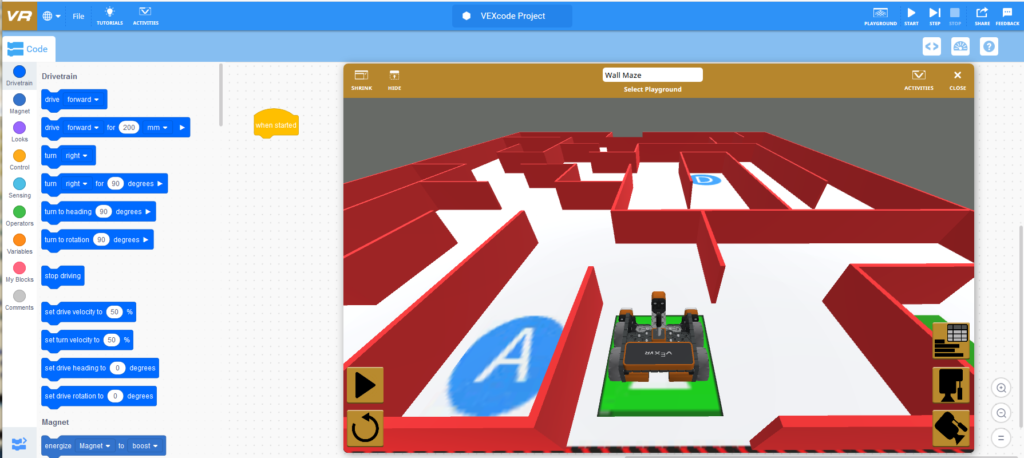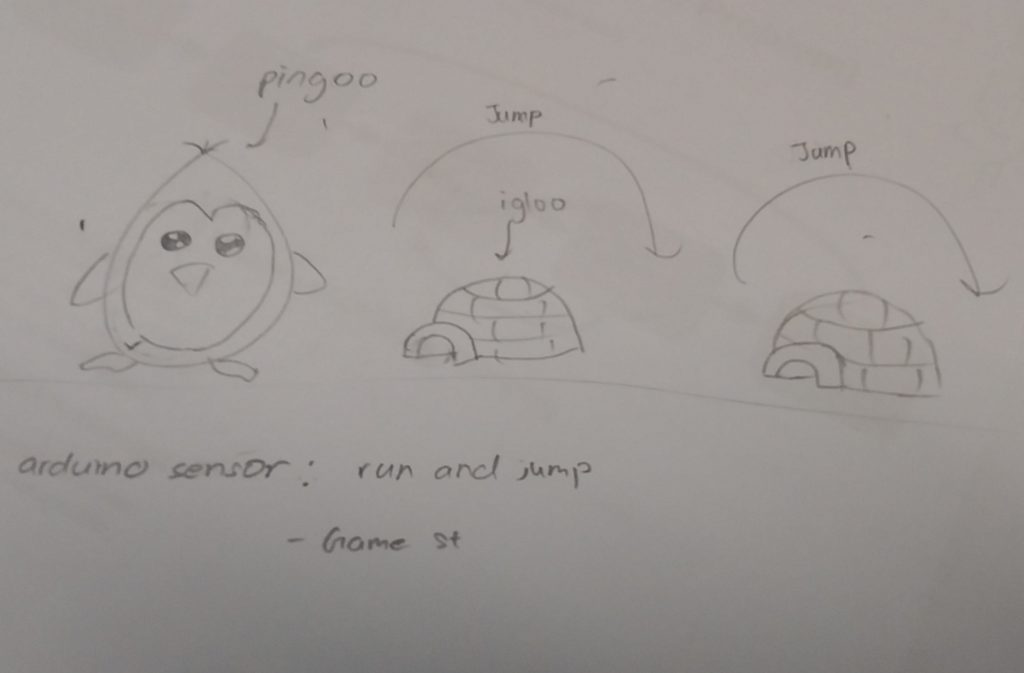As we were looking around for best practice solutions to continue teaching Robotics in the virtual classroom, VEX announced its release of VEXcode VR. Besides being made free for public and educational use, the VEXcode VR platform was designed an equalizer, so that no matter what device you had access to, you could participate in online STEM learning.

This platform just ticked the box for all of the requirements that were suddenly coming fast and furious from schools, who wanted to resume enrichment programs through virtual classrooms:
- Robotics Simulation
- Block Programming + Python API
- Simulated Sensors & Actuators
- Algorithmic Challenges – not just hard-coding paths
- Fun to play with!
- Soft Hardware Requirements – Can be used on iPads or other Tablets
- Enough depth for 1-2 months of lessons (wishful thinking)
There’s an Art Canvas for Turtle programming, a Maze for path creation and algorithmic way-finding, a Castle for a bumper/crasher game, an electromagnet-based game challenge for collecting game elements on the field. Grids that can be used to teach some abstract math concepts, like 2D coordinate systems. It’s quite robust, too!
Is it a perfect platform? No.
Some glaring issues:
- No way to simulate line-following, one of the main use-cases of Robotics competitions in primary and secondary school level events.
- No way for two robots to interact on a single game field concurrently
- No way to design robots
- No moving actuator (only an electromagnet)
- A too-perfect simulation, physics engine-wise
- Limited scope with no obvious pipeline of expansion
Still, we want to thank VEX and Innovation First for their generous and timely release.
If nothing else, it has piqued our interest again in creating our own Robotics Simulation toolkit (TBC).




